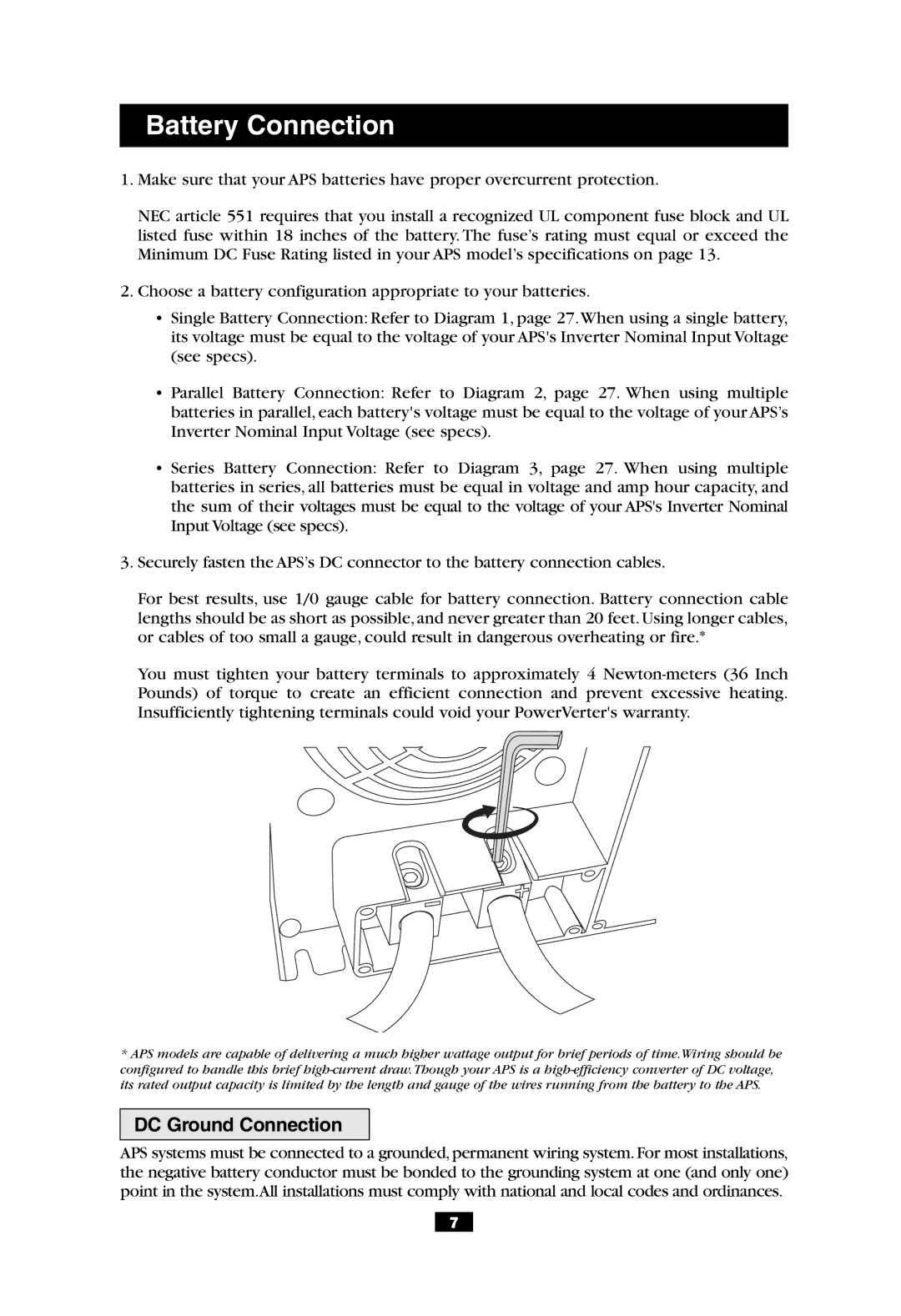
Battery Connection
1.Make sure that your APS batteries have proper overcurrent protection.
NEC article 551 requires that you install a recognized UL component fuse block and UL listed fuse within 18 inches of the battery. The fuse’s rating must equal or exceed the Minimum DC Fuse Rating listed in your APS model’s specifications on page 13.
2.Choose a battery configuration appropriate to your batteries.
•Single Battery Connection: Refer to Diagram 1, page 27.When using a single battery, its voltage must be equal to the voltage of your APS's Inverter Nominal Input Voltage (see specs).
•Parallel Battery Connection: Refer to Diagram 2, page 27. When using multiple batteries in parallel, each battery's voltage must be equal to the voltage of your APS’s Inverter Nominal Input Voltage (see specs).
•Series Battery Connection: Refer to Diagram 3, page 27. When using multiple batteries in series, all batteries must be equal in voltage and amp hour capacity, and the sum of their voltages must be equal to the voltage of your APS's Inverter Nominal Input Voltage (see specs).
3.Securely fasten the APS’s DC connector to the battery connection cables.
For best results, use 1/0 gauge cable for battery connection. Battery connection cable lengths should be as short as possible,and never greater than 20 feet. Using longer cables, or cables of too small a gauge, could result in dangerous overheating or fire.*
You must tighten your battery terminals to approximately 4
*APS models are capable of delivering a much higher wattage output for brief periods of time.Wiring should be configured to handle this brief
DC Ground Connection
APS systems must be connected to a grounded,permanent wiring system. For most installations, the negative battery conductor must be bonded to the grounding system at one (and only one) point in the system.All installations must comply with national and local codes and ordinances.
7
